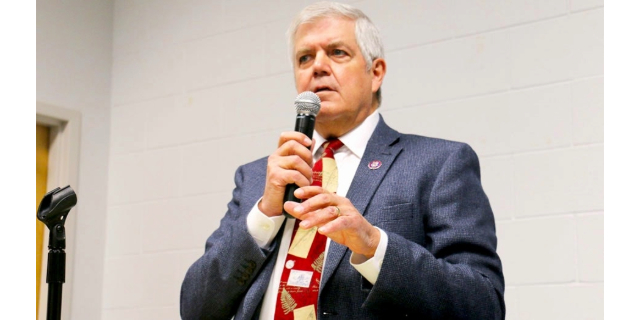GUEST COLUMN: On the banks of the Rogue River
Published 6:00 am Wednesday, May 21, 2025
In spring most pairs come back to near where they were born to mate in the water, build a nest and hatch their eggs, a process that takes about a month. Last year, the pair that shares our land, nested on the ground under a group of Oregon Grape that flourishes in the shade of a huge Douglas fir.
This fir was once our Christmas tree. After several years our daughters pulled it out of its pot and planted it. That was so very long ago, our girls barely bigger than goslings themselves, so now the fir soars seventy feet up toward the sky.
While I loved the symbolism of this monogamous pair of geese having their family under our special tree, I worried about the location. Although they were thoroughly camouflaged — I could barely see them — I know that fox, raccoons, even the ever-present ravens are wily predators.
It’s impossible to get close to a goose nest to observe clearly. Every time I’ve tried, the gander dive bombs my head, hissing and honking at me to get lost. I pay attention and leave in hurried self-defense.
From silently watching, I know that these stately birds grieve. They wander aimlessly, calling out in some altered vocabulary and stop eating when a baby or a spouse dies, their reaction to ultimate mystery matching our own.
And yet, some consider this species a problem. If their droppings bother you or their trampling means your lawn shows signs of strain, you can get a permit to destroy nests and eggs.
A larger concern is when a flock interrupts the flight of a commercial airplane. The most famous example is the plane that landed in the Hudson River. All the humans survived, but over 1,800 Canada geese were captured and euthanized for future passenger’s safety following that tragic encounter.”
Some seem to overwinter here, others migrate south for warmth and food. Then you see them flying in the V-shape, which reduces wind resistance. When the gander leading the flock tires, others take his place so the flock can continue traveling. Geese can even sleep while flying. If one gets out of line, it loses the advantage of the updraft created by the V-formation which allows it to fly more easily, so it quickly gets back into place, an example for us earth-bound creatures of cooperation and unity.
This year the geese have chosen a more remote location for their nest. They are up on the slanted roof of our concrete pump house. If I hide behind the little pine tree, through the needles I can see the tops of their two black heads, staying alert, keeping the eggs safe. Once I saw Mama leave the nest, Papa staying, watching her from a distance as she took a much needed break. She strutted and pecked, then bathed in the shallows of the river before flying back to join her family.
Each day I slip outside to take in this sylvan scene. I slow down — enjoy the silence of the rising sun, the river’s spirited rhythm — and I wish them well, their precious, fragile lives, and mine, so intertwined, so strongly attached to this land, this river, this sky.
Anne Batzer lives in Sams Valley.







